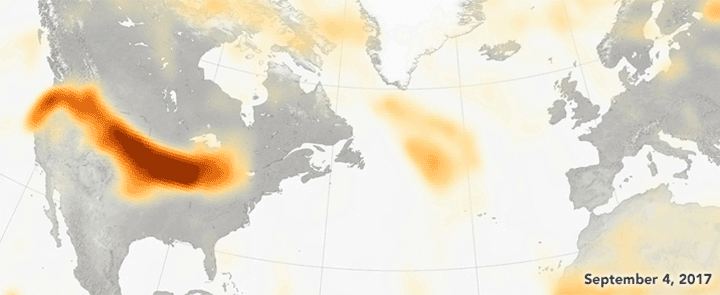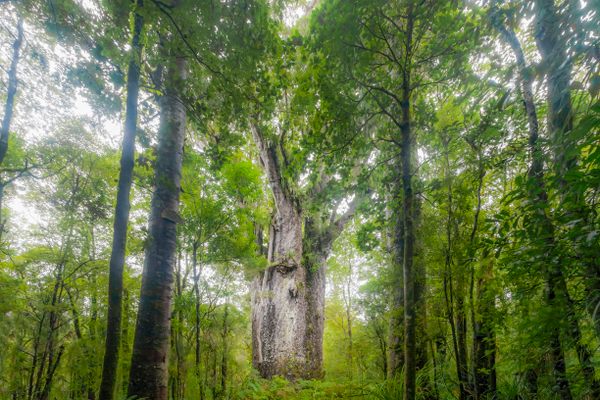Smoke From North American Wildfires Made It All the Way to France
“It’s going to take a while for everything to dissipate.”

If it seems like the entire Pacific Northwest is on fire right now, that’s because, well, it kind of is. Despite a rainy winter and spring, this fire season is one of the worst in recent memory, with 126 fires burning more than two million acres at the time of publication. The Chetco Bar fire in Southwestern Oregon is currently the largest among them, and has consumed more than 188,000 acres since mid-July. Farther north, British Columbia alone has 153 active fires. And where there’s fire, there’s smoke.
So much smoke, in fact, that some has drifted clear across the continent and an ocean.
One of NASA’s satellites tracked a cloud of smoke making its way—over just four days in early September—from the Pacific Northwest to France. Not all of the smoke produced by North American fires is being blown clear across the world (much to the relief of Parisians), but some makes it up to higher altitudes, where it is picked up by prevailing winds and carried to the east. According to NASA atmospheric scientist Colin Seftor, “It’s not that uncommon for smoke from fires in North America to reach Europe.” But, he noted on NASA’s Earth Observatory, this year’s smoke is particularly thick and persistent. Smoke from mid-August fires in North America lingered over Europe for days. “It’s going to take a while for everything to dissipate,” he added.






















Follow us on Twitter to get the latest on the world's hidden wonders.
Like us on Facebook to get the latest on the world's hidden wonders.
Follow us on Twitter Like us on Facebook